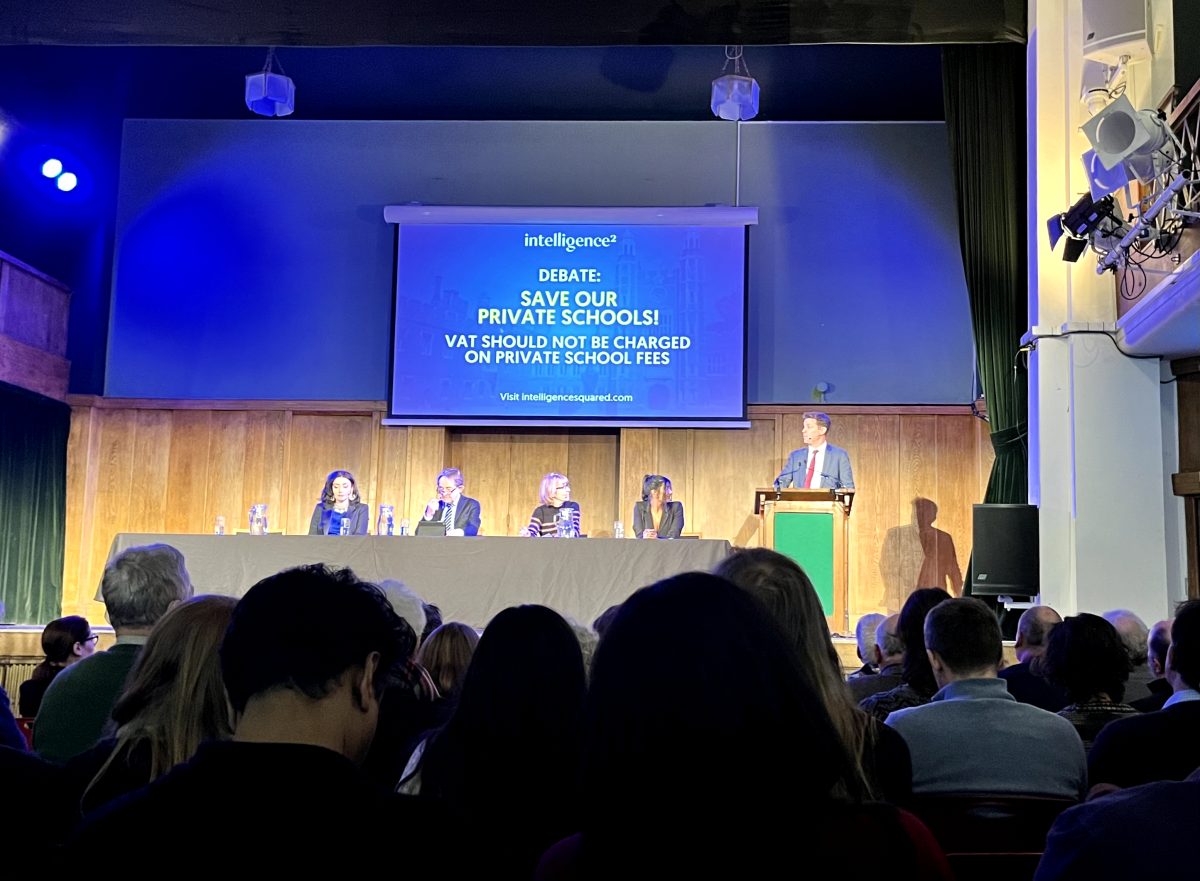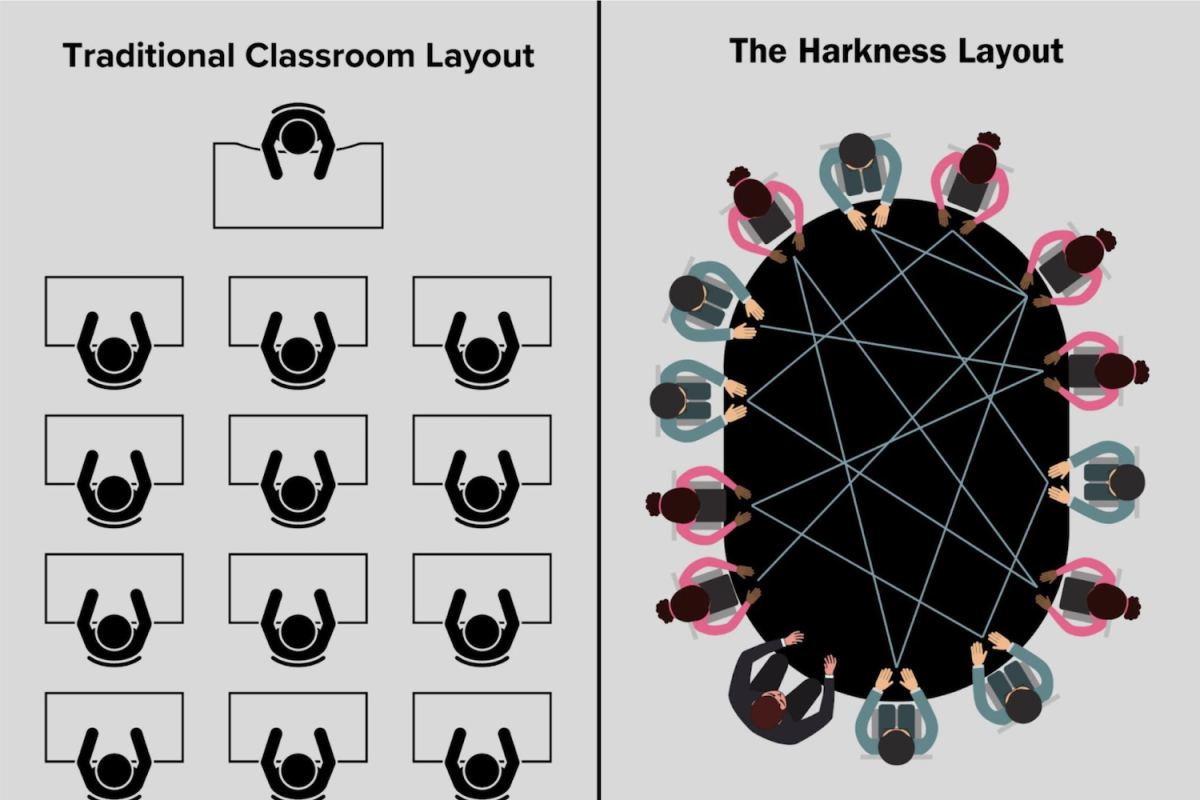As I sat stiffly at the wooden oval table in English class, I felt my teacher peer at me, urging me to speak through their stare. I searched my brain for something to say but my mind had gone blank. A wave of dread engulfed me, and my face turned a shade of pink. All of sudden, a thought popped into my head, but just at that moment, the conversation shifted to an idea 10 pages earlier. The cycle repeated.
Phillips Exeter Academy, where the concept of Harkness discussions was born, describes the circular discussion model as a space for “collaboration and respect, where every voice carries equal weight.” However, my experiences have proven rather different. Often, the table is dominated by a few individuals, while the others feel inadequate for not sharing their ideas. In an environment where only certain individuals share, not all voices are heard, defeating the main idea and goal of Harkness.
According to English Teacher Stephen Potchatek, the English department adopted Harkness discussions in its pedagogy between 2007 and 2008. Now, the method is regularly used in every English class across the High School. While the goals of Harkness are extremely valuable, the method does not currently prove beneficial for all learners and requires change.
In my experience at the table, Harkness moves quickly and therefore requires fast, on-the-spot thinking. I find myself waiting to share an idea when, suddenly, the topic changes and turns to another direction. Although I value listening to my peers and do not expect to share every one of my ideas, I do struggle with the speed of the conversation.
I have witnessed people speak just because they feel pressure to fulfill the perceived requirement rather than thoughtfully engage in the conversation
Students who feel anxious about contributing will struggle to come up with purposeful ideas to share quickly enough. According to The New South Wales Department of Education, anxiety can be one factor that slows down thinking and processing speeds. The anxiety to keep up with the conversation and share ideas can limit contributions from some learners and therefore ruin the true purpose of Harkness which is to include everyone.
Moreover, as a student who sometimes prefers to sit back and listen, I have noticed that a competitive atmosphere can develop during Harkness. These discussions count for a large part of a student’s speaking and listening grade; I have witnessed people speak just because they feel pressure to fulfill the perceived requirement rather than thoughtfully engage in the conversation.
When formality and competitiveness overtake the table, I feel like my underdeveloped ideas cannot be shared because there is no room to make mistakes. Thus, the atmosphere of Harkness discussions can hold students back from fully contributing.
Furthermore, according to the student-led education non-profit, EPIC, students who flourish in structured learning environments may find it difficult to participate and benefit from Harkness. Harkness conversations are spontaneous, which only poses benefits to certain students.
Additionally, Harkness does a disservice to visual learners. According to the Social Science Research Network, 65% of the world’s population are visual learners, meaning they may struggle with following spoken ideas. Harkness puts a lot of emphasis on speaking and listening, yet does not provide many outlets to fulfill the visual needs of many students.
I recognize that a traditional classroom seating arrangement in rows with hand-raising can create a similar, if not worse environment, and am in no way suggesting that we should return to that classroom philosophy. Rather, adjustments must be made to eliminate the competitive nature of Harkness.
The pedagogy for English classes does not need to be demolished, but rather restructured.
The pedagogy for English classes does not need to be demolished, but rather restructured. For a Harkness discussion to delve deep, I propose that the material for any given discussion be shortened, so the conversation can remain on one idea for a longer period, thus slowing down the pace and also giving students more ability to prepare for topics.
Furthermore, incorporating some visual learning outlets for visual learners, such as regularly encouraging some students to sketch ideas and diagrams during the conversation, is essential. Encouraging visual note-taking techniques could help visual learners engage more in discussion. Lastly, the fraction of the speaking and listening grade that depends on Harkness participation should be adjusted so that our contributions to class as a whole are part of that grade, not just those shared in the Harkness period.
Let’s plunge into a real discussion about how we can make Harkness better for the learners who aren’t verbalizing much, and work to hear from all participants. Then, the power of Harkness can come out of its shell and benefit all students in their English classes.





